One exciting aspect of Linux unlike with Windows and Mac OS X, is its support for numerous number of desktop environments, this has enabled desktop users to choose the appropriate and most suitable desktop environment to best work with, according to their computing needs.
A Desktop Environment is an implementation of the desktop metaphor built as a collection of different user and system programs running on top of an operating system, and share a common GUI (Graphical User Interface), also known as a graphical shell.
Suggested Read: 13 Open Source LightWeight Desktop Environments I Discovered in 2015
In this article, we shall list and walk through some of the best desktop environments for Linux, including a few of their illustrious features and components. However, we should note that this list is not organized in any particular order.
That said, let’s move to listing the desktop environments.
1. GNOME 3 Desktop
GNOME is probably the most popular desktop environment among Linux users, it is free and open source, simple, yet powerful and easy to use. It is designed from ground up to offer Linux desktop users a wonderful and exciting computing experience.
It presents a activities overview for easy access to basic tasks, provides a powerful search tool for users to access their work from any place. However, GNOME 3 latest stable release ships in with the following distinguished components and features:
- Uses Metacity as default window manager
- Comes with Nautilus as default file manager
- Supports desktop notifications using a convenient messaging system
- Enables on/off switching of desktop notifications and many more
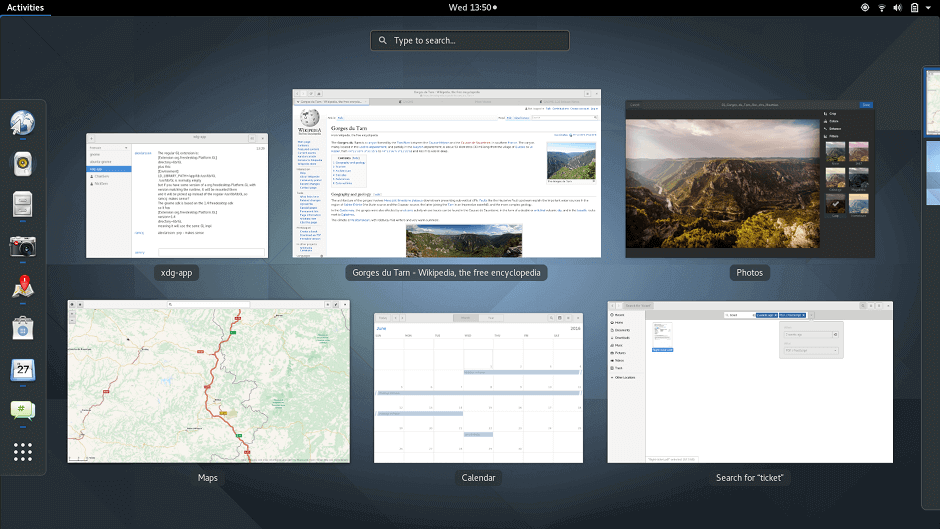
Visit Homepage: https://www.gnome.org/gnome-3/
2. KDE Plasma 5
KDE is a well-known, powerful and highly customizable desktop environment, designed to offer Linux desktop users absolute control over their desktop.
The latest release in the KDE desktop series is the Plasma 5, which has brought in several improvements and new features. It has come with clean and well-polished user interfaces in comparison to previous versions, with improved readability.
Built using Qt 5 and frameworks 5, a number of the notable components and new features in Plasma 5 include:
- Dolphin file manager
- Kwin window manager
- A converged shell
- Updated graphics stack enabling smoother graphics performance
- Modernized launchers
- Workflow improvements in the desktop notification area
- Improved support for high-density (high-DPI) display plus many other minor features
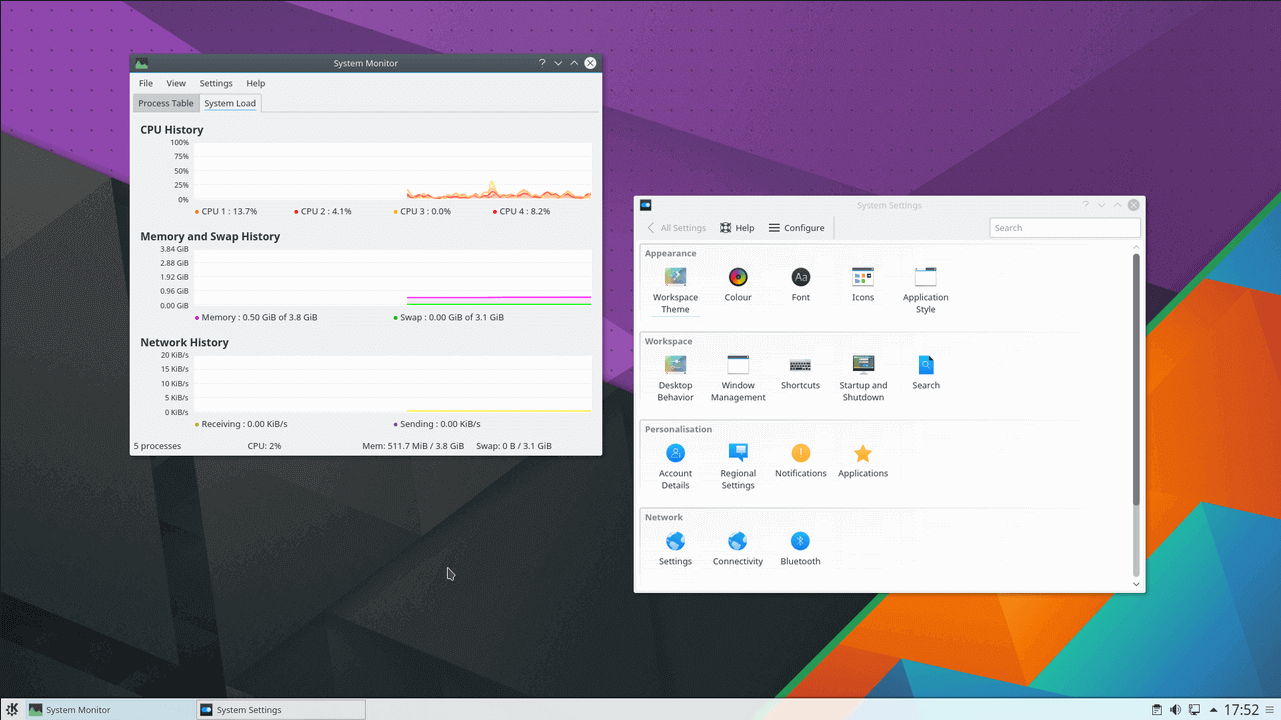
Visit Homepage: https://www.kde.org/
Installation: https://www.tecmint.com/install-kde-plasma-5-in-linux/
3. Cinnamon Desktop
Cinnamon is in fact a collection of several minor projects such as Cinnamon, a fork of the GNOME shell, Cinnamon screensaver, Cinnamon desktop, Cinnamon Menus, Cinnamon Settings Daemon coupled with many more.
Suggested Read: 6 Cool Linux Distributions to Review on Your Old PCs and Laptops
Cinnamon desktop is a fork of the GNOME desktop environment, it is the default desktop environment on Linux Mint together with MATE.
Other minor projects and components integrated in the Cinnamon desktop comprise of the following:
- MDM display manager
- Nemo file manager
- Muffin window manager
- Cinnamon session manager
- Cinnamon translations
- Blueberry, a bluetooth configuration tool plus many more
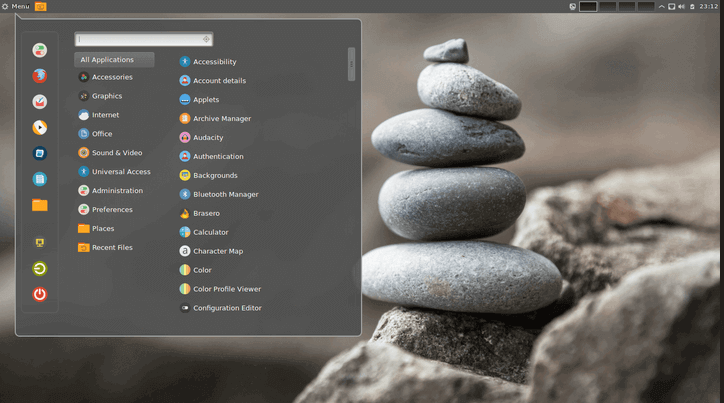
Visit Homepage: http://developer.linuxmint.com/projects.html
Suggested Read: Install Cinnamon Desktop in Ubuntu and Fedora Distributions
4. MATE Desktop
MATE is an intuitive and appealing desktop environment, that is an extension of GNOME 2. It works on Linux and many other Unix-like systems. It comes with a handful of default applications such as Caja file manager, Pluma text editor, MATE terminal and more.
Additionally, it is also the default desktop environment for Linux Mint along side Cinnamon desktop.
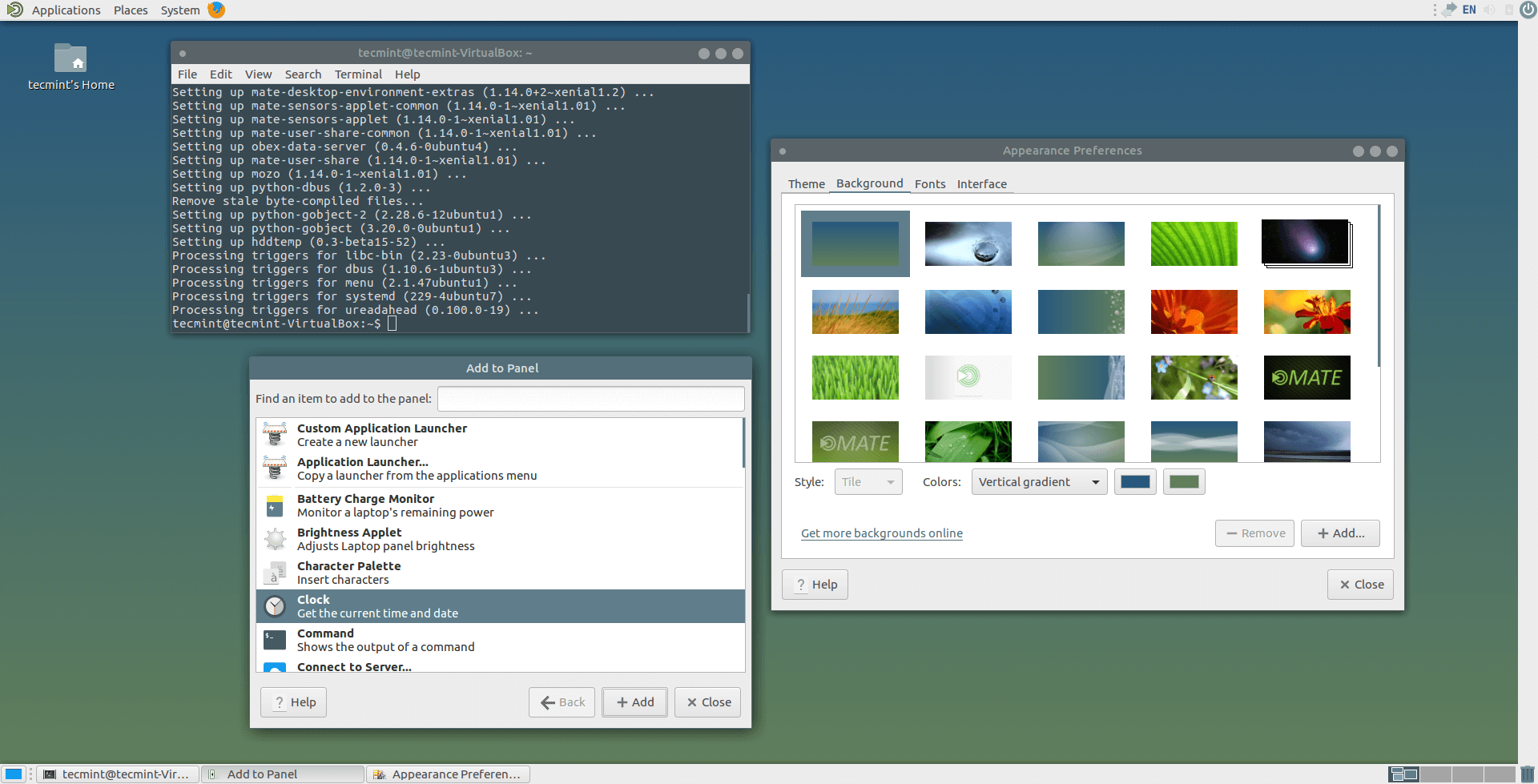
Visit Homepage: http://mate-desktop.com/
5. Unity Desktop
Unity is a graphical desktop shell for GNOME desktop environment. The Unity project was started by Mark Shuttleworth and Canonical, the makers of the well-known Ubuntu Linux distribution. It was started back in 2010, with aims of offering desktop and netbook users a consistent and elegant computing experience.
Suggested Read: Top Linux Distributions To look Forward To In 2016
We must note that, Unity is not a totally new desktop environment, but basically an interface to existing GNOME applications and libraries, with various technologies integrated within it, Unity comes with the following prominent components and features:
- Compiz windows manager
- Nautilus file manager
- A system dashboard
- Lens, that sends search queries to Scope
- Scope, a powerful search feature, that searches both locally and online in case the machine is connected to Internet
- Unity preview, that previews search results in the dashboard
- Offers an application indicator
- System indicator that provides information about system settings such as power, sound, current session and many more
- A simple and sleek notification component combined with other minor features
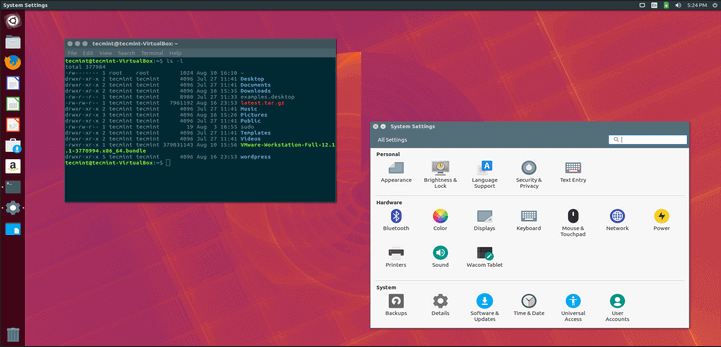
Visit Homepage: https://unity.ubuntu.com/
6. Xfce Desktop
If you are looking for a modern, open source, lightweight and easy-to-use, desktop environment for Linux and several other Unix-like systems such as such as Mac OS X, *BSD, Solaris and many others, then you should consider checking out Xfce. It is fast, and importantly user friendly as well, with low system resources utilization.
It offers users a beautiful user interface combined with the following components and features:
- Xfwm windows manager
- Thunar file manager
- User session manger to deal with logins, power management and beyond
- Desktop manager for setting background image, desktop icons and many more
- An application manager
- It’s highly pluggable as well plus several other features
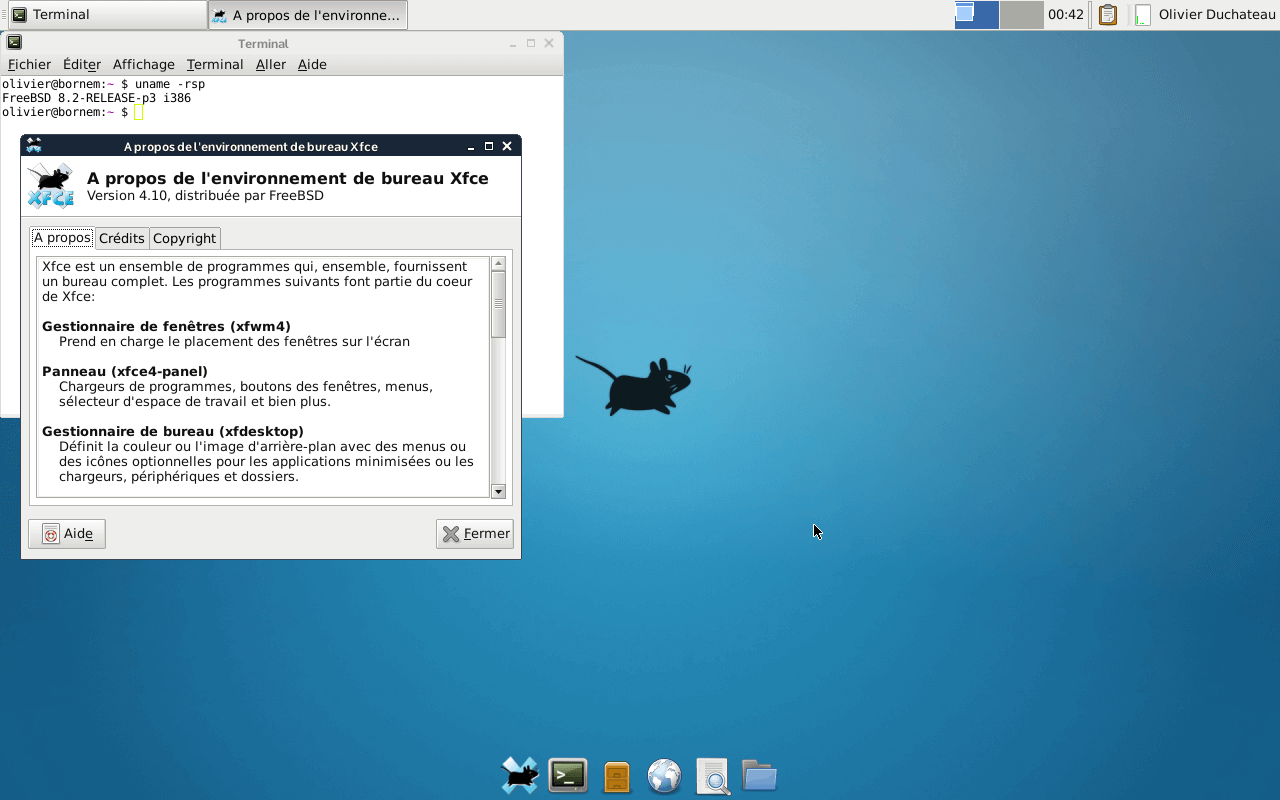
Visit Homepage: http://www.xfce.org
7. LXQt Desktop
LXQt is also free, open source, lightweight, simple and fast desktop environment for Linux and BSD distributions. It is the latest version of LXDE, specifically designed, and a recommended desktop environment for cloud servers and old machines due to its remarkably low system resources usage such as low CPU and RAM consumption.
It’s the default desktop environment on Knoppiz, Lubuntu and a few other less known Linux distributions, some of its notable components and features are listed below:
- pcmanfm-qt file manager, a Qt port for PCManFM and libfm
- lxsession session manager
- lxterminal, a terminal emulator
- lxqt-runner, a quick application launcher
- Supports multiple international languages
- A simple and beautiful user interface
- Supports an integrated energy-saving component
- Supports several keyboard shortcuts plus many more
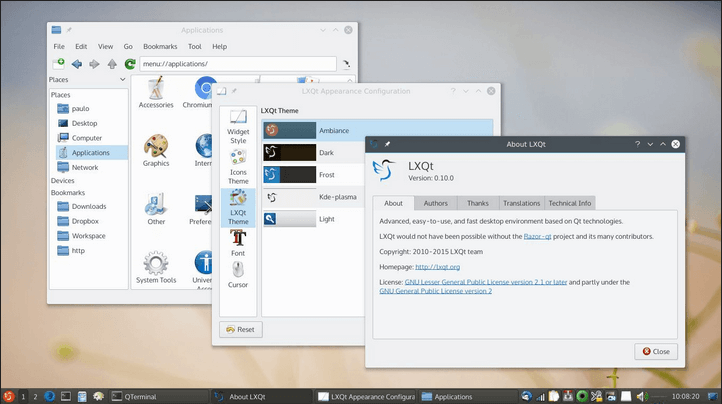
Visit Homepage: https://lxqt-project.org/
8. Pantheon Desktop
Pantheon is a simple and well-designed desktop environment for Elementary OS, a Windows and MacOS X like Linux distribution. It offers users a clean and organized desktop experience. Due to its simplicity, Pantheon comes with not many visually observable features as compared to other popular desktop environments.
Suggested Read: Top 5 Best Alternative Linux Distributions for Windows 10 Users
Nevertheless, it works exceptionally well for new Linux users switching from Windows or Mac OS X operating systems.
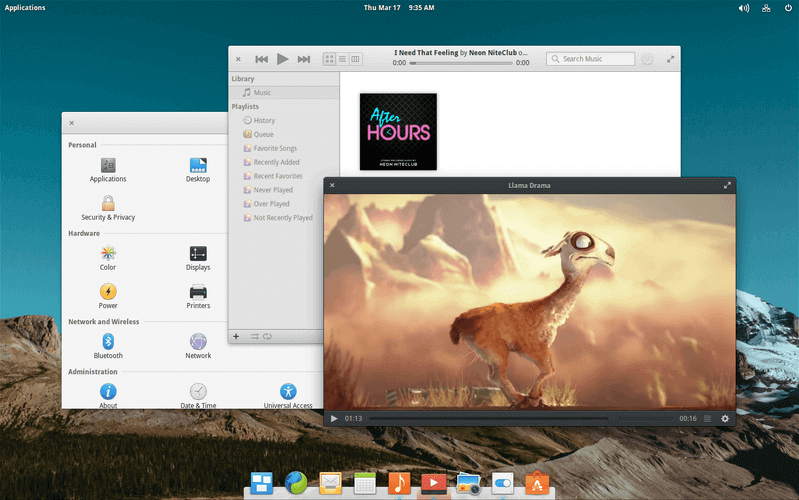
Visit Homepage: https://elementary.io/
9. Deepin Desktop Environment
Deepin Desktop Environment(DDE) is also a simple, elegant and productive desktop environment for Linux, developed by the makers of Deepin OS.
It works on several other Linux distributions as well including Arch Linux, Ubuntu, Manjaro among others, it ships in with some well designed and sleek user interfaces for absolute productivity.
Furthermore, it is also user friendly with few configurations available. Most configurations are performed from a pop-out side panel, additionally, users can launch applications from a dock at the bottom of the screen similar to that in Pantheon desktop.
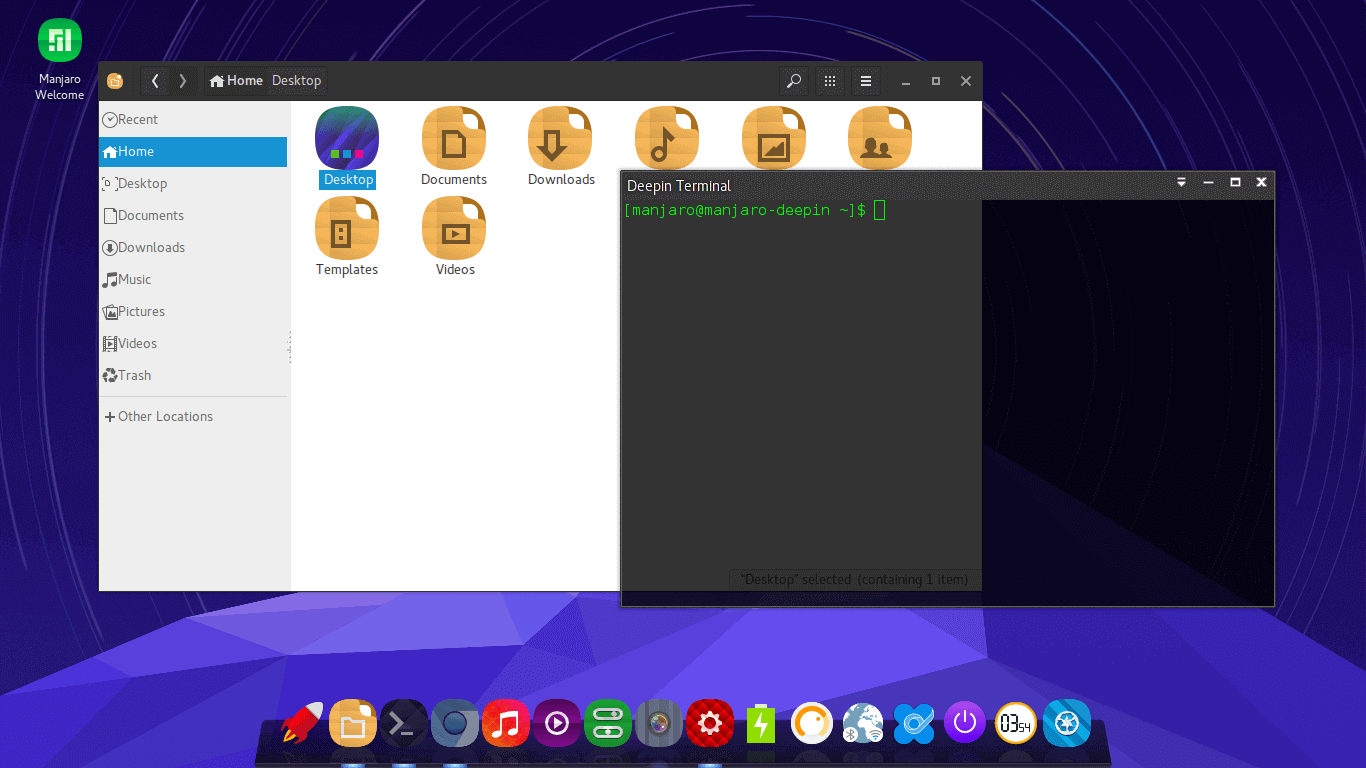
Visit Homepage: https://www.deepin.org
10. Enlightenment Desktop
Enlightenment initially started as a windows manager project for x11 system. However, the project has grown to include a full desktop environment, mobile, wearable and TV user interface platforms as well. Additionally, the developers also wrote some useful libraries in the course of the project advancement.
The libraries created will be used to build several desktop applications as well such an image viewer, video player and a terminal emulator and more, with up coming future works on a complete IDE.
Notably, it is in active evolution from x11 to Wayland as the primary graphical display layer for the Linux ecosystem.
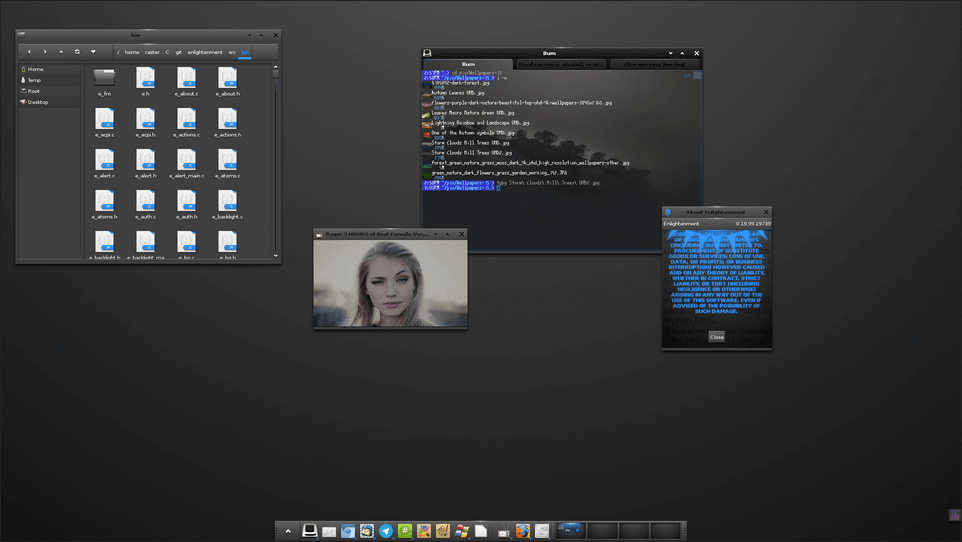
Visit Homepage: https://www.enlightenment.org
Which of the above desktop environments is your favorite? Let us know via the feedback section below by sharing your Linux desktop computing experience with us, you can as well inform us of other less known, yet powerful and exciting desktop environments not mentioned here.


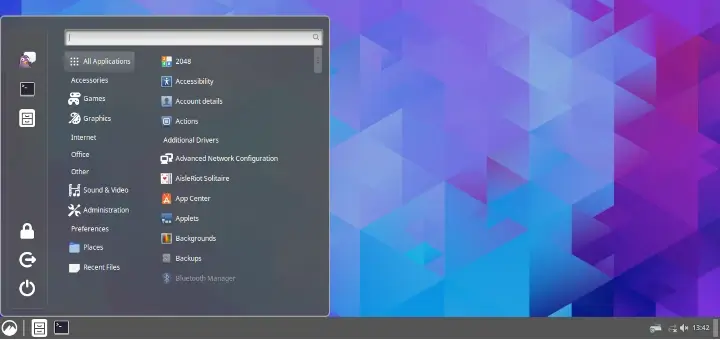
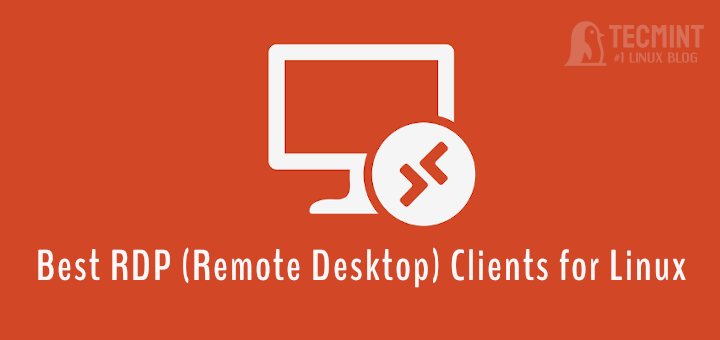
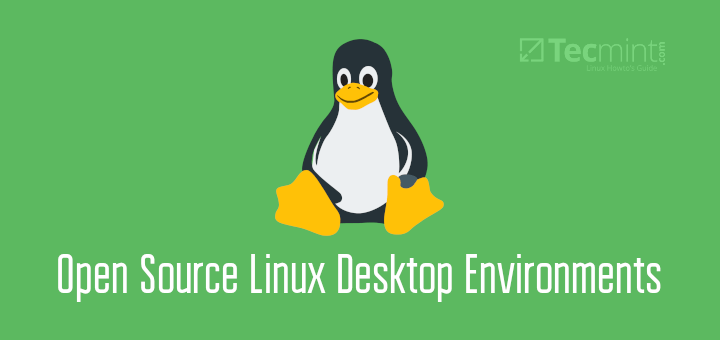
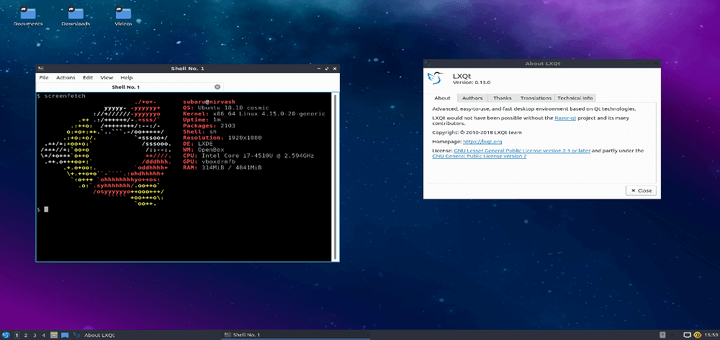

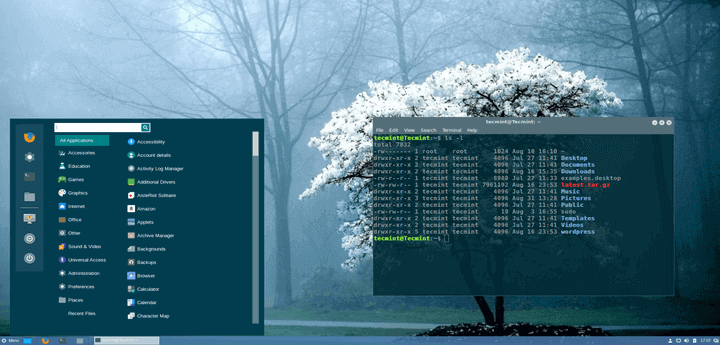
GNOME is my first Desktop Environments, it’s feel good to use it.
But now I want to try another option.
thanks, good reference dude
Why Gnome does not come with minimized buttons on its windows? I think it’s annoying to have to set those basic things on Gnome, but I don’t mind spending hours customizing KDE. In another hand, I like Mate as it is.
These DEs, along with those suggested by posters, maybe the “most popular” but “best”? Not by a long shot.
“Best” is a meaningless term. It is based on highly subjective personal opinions. Every user has his/her own criteria of what constitutes “best”. The debate is not about tastes. What is the “best” flavor of ice cream?
If any of these Desktop Environments was truly the “best”, it would be the only one left standing. As it is, the article lists “10 best”, undermining the claim of any to actually be considered the “best”. Then posters are adding their own “bests” to the list.
“Best” is what you like, what you are used to using, what works for YOU. Personally, I liked KDE 3.x the most. However, I would not declare it as “the BEST of all time”, or at least since sliced bread was invented.
Sorry but at this moment Budgie is my favorite….
slick and beautiful
I liked MATE and Cinnamon, but now my favorite is KDE Plasma 5.
I don’t see myself needing anything else.
@Danny
Many thanks for sharing your thoughts with us.
You have the wrong URL for LXQt. It is “https://lxqt-project.org/”.
@Mark,
Thanks, corrected the URL in the article…
To me, this is one of the ‘strengths’ of Linux. We can all pick a UI that works for us. We are not shoehorned into just one… Never did like Gnome. Every time I try/tried it I just can’t connect with it.
However LXDE, Cinnamon, and KDE just seem to fit ‘me’. Right now all my laptops and desktops are using KDE (Ubuntu 20.04 LTS). The only complaint was the ‘menu’ … but then found that I could change it to the ‘classic’ menu so no complaints at all now! I initially walked away from KDE back when they radically changed it (V4 I think?), but now back and really like it. Windows free here at home for years now.
Plasma, Gnome, and Enlightenment wants Wayland. Unity is Dead. Lxqt and Mate are trying to use MIR or Kwin as Window mangers. The rest of them will have to stick with X11. Do you want X 11 Forever. Sway seems interesting.
@BO
This is some good info, thanks for sharing.
KDE is (as far as i know) the only desktop environment that launch an application as another user. That’s good plus.
@Cem
Yap, KDE is really cool; it offers numerous useful functionalities for a desktop user. But it tends to consume a lot of RAM(especially when you have small RAM), i tried it before but now an using Cinnamon.
I do not think so. 1GB of RAM used on a fresh start with Firefox opened and then closed, Thunderbird, Viber, and Nextcloud client working.
When clean KDE is loaded with no Apps to autostart it costs about 700-800MB of RAM.
This is Kubuntu 20.04.
Thank you Aaron for this piece – your work is excellent! I am late in this discussion but Canonical is changing from Unity back to Gnome shell and I am very happy. I hated Unity
Here is the link to Mark’s announcement https://insights.ubuntu.com/2017/04/05/growing-ubuntu-for-cloud-and-iot-rather-than-phone-and-convergence/
@Mak
Useful piece of info here, thanks a lot for sharing this and for the kind words of appreciation.
By far the most popular desktops are unity and cinnamon at my university (I teach CS/IS and some graphic design). It is not even close. Mint is the most popular desktop distro here while Ubuntu is the most popular overall but that is split between the desktop version and the server which we use frequently at the university for class projects (terminal only).
Gnome3 itself is probably no longer in the top 5. I have seen a lot of students give up on Debian because of Gnome3 (usually new students who don’t know they can remove gnome or don’t want to bother). Some Mac students lean toward elementary OS. Mate and LXis definitely popular because a lot of kids have older laptops and when Cinnamon is too much they default to lubuntu.
Realistically its probably:
1 – Cinnamon (I would say about 1/3 of our kids use this)
2 – Unity (I would say another 1/3 use this)
3 – KDE (maybe 1 out of every 10)
4 – Mate (almost all the lower end PC’s who cant run Unity or Cinnamon well)
5 – Pantheon (some of the mac laptop kids prefer this)
6 – LXDE (when Mate is still too slow and they insist on a IDE… mainly due to Lununtu)
Gnome3 (i would say 1 student every semester so about 1/100 or so).
Canonical almost lost me back in 2011 when they “forced” Unity on the world, but after 6 months on the “Mint lifeboat”, I found my way back and they completely won me over. In my opinion, Unity is just so much more polished and well designed in comparison to anything else out there. Just wish it was a bit better optimized but feel this will improve in Unity 8 which will shave off all the Compiz hackery.
The only other DE I use frequently is GNOME 3 – I use it on my HTPC and it’s surprisingly well laid out as a “from your couch” interface. I dabble with other DEs from time to time, but nothing else has really “spoken” to me yet. Enlightenment is nice but unpolished, and I’ve never been a KDE man. Cinnamon reminds me too much of Windows. I did use XFCE for a period out of nostalgia for GNOME 2 (did the same recently with MATE), but always seem to come crawling back to Unity.
@Whid
Thanks a lot for sharing your thoughts.
I just wanted to say “Thanks for the list”. I’m always looking for something new to mess with, and my current usage is as follows (all on top of Slackware):
KDE Plasma (for when I’m lazy or “need” things done “for” me; also love the polish and commercial feel – sometimes)
Xfce (when I want speed and simplicity; I treat it as a glorified WM, for when I want to polish my command line skills, but still want/need a graphical interface for other tasks)
Enlightenment (for when I want to feel uber cool and have a fully customized desktop and act like I know how to use it :P )
Keep up the good work!
@Ryan
Welcome, thanks to you, importantly for the great feedback and appreciating the work we do here.
Are you kidding me ? Where is i3wm.org ? That’s the best one. Obviously It’s not for everyone.
Desktop Environments are not Window Managers. i3wm is a WM like openbox, fluxbox, metacity, kwin, pantheon. Don’t mess with them.
@Hanner
That is true, Metacity was the default window manager in GNOME 2. Many thanks for the useful correction.
Clarification on Gnome 3 desktop, Mutter is the default window manager and not Metacity. Avid Mate user but finding Gnome 3 more and more appealing…
And what about Enlightenment? It’s been around for a very long time
Thanks for mentioning it out, we shall surely add it to the list above.
Enlightenment has been included in the list and many thanks for the wonderful suggestion.
OK, so “of all time” means “of the last few months”. Good to know.
I recently moved from Gnome 3 to KDE Plasma, and I am how a happy camper. KDE is awesome. I also love the KDE applications (Okular, KDevelop, Kile, Amarok, k3b, Dolphin, Gwenview, Kdenlive etc.). And there is also KDE Connect, which allows me to access messages and notifications from my cell phone using my desktop and control my desktop from my phone. Version 1.0 of KDE Connect will allow users to reply to SMS messages from their computers. In short, KDE is an excellent DE. It is more complex than Gnome 3 and not as easy to use. See https://www.youtube.com/watch?v=uRfBBQx1wAs .
@Francisco
One of my best DEs was KDE 4, i liked it because it was highly configurable, however, it consumed so much memory and forced me to move over to Cinnamon DE. But with the latest buzz about KDE Plasma 5, with the sleek and beautiful user interfaces, i hope to check it out once more. As you have stated, the apps are great and really helpful.
Lastly, the KDE DE is so powerful, gives users absolute control over their desktop. Above all, many thanks for sharing your experience and thoughts with us.
I’ve downloaded the Linux Mint 18/KDE beta (utilizes KDE/Plasma 5.6 at present), wrote it to a thumb drive and loaded it up in a live session. I have to say I was impressed even though Mint 18/Cinnamon is my daily driver.
Try it yourself when you have time:
http://blog.linuxmint.com/?p=3086
Make sure you read the Linux Mint blog post about the Plasma 5.0 DE coming in the Mint 18/KDE edition first since this is not the usual Mint-modified version of their KDE release as in the past:
http://segfault.linuxmint.com/2016/08/plasma-5-is-coming/
@Kirk M
Am pleased to know about this, i will definitely give it a try. Thanks for getting back.
IMHO, the best one is missing. DDE, which is shipped and built by the Deepin OS team. It’s also integrated un a special Manjaro (Arch based) edition. My favorite DE so far, elegant, simple and the most productive I ever user. Have a look, trying is adopting.
@Jean-Philippe
We actually did not know about Deepin DE, we shall definitely check it out, and review it as soon as possible. Thanks for mentioning it to us, and i personally hope to try it out as well.
@Aaron
You’re welcome.I think it could be a good addition to this nice list :)
You may have a look at it here :https://www.youtube.com/watch?v=AFMp45EFx9A
@Jean-Phillipe
We have added Deepin DE to the list as you suggested, thanks again for getting back to us.
Just to clarify about the Cinnamon DE. Although Cinnamon was initially a fork of gnome-shell and was a front end to Gnome 3, it became it’s own desktop environment as of version 2.0 (2013) and it ceased to be a shell and has been so since. As of version 2.0 Gnome 3 was no longer required to be installed in fact, the two DEs were not compatible at all. Later, certain modules of Gnome 3 were added back and modifications were made to the Cinnamon DE in order to make the Cinnamon DE and Gnome 3/gnome-shell compatible with each other for those that wanted to install both DEs on the same install.
@Kirk M
Thanks for the wonderful and useful clarification, there is a lot of vital information you have provided concerning Cinnamon desktop environment. It has complemented the review so greatly.
You show most of these with a menu bar on the top – not the default for some of them such as Mate for example. In Linux Mint, the most downloaded Linux Distribution on DistroWatch.com, Mate is set up with the menu bar on the bottom like the default Windows XP and Windows 7 set up. It is easy for somebody coming from Windows. You show most of them set up in a way that would not appeal to a Windows user.
@Bob
That is a good concern, as you have stated clearly, the default setup shows menu bar at the bottom for example in Linux Mint MATE edition, i believe when a new user installs the operating system for the first time, it will come with the default settings.
However, i hope the images shown here will not affect the choice of a new user or anyone planning to shift to a new desktop environment. Settings can always be altered later on as desired. Thanks for getting back to us.
So many to choose from! So many offer the same or similar functionality. So many seem to be based upon “look and feel”. A simple end user like me just gets confused by all the choices. I know all this means we are not stuck with vanilla or variations thereof but sometimes, just sometimes I would prefer just one good way of doing something rather than a bit of this and a bit of that mixed with something new! I would so dearlly love to see (quite literally) a mention of desktops that aid those with Low Vision right up those who are partially sighted and those with next to no vision.
@Dave
We have not come across any Linux desktop environment meant to “aid those with Low Vision right up those who are partially sighted and those with next to no vision” or any that meets specifications close to what you actually need. But we shall be on the look out to find one that is if it exists out there, you can as well make to us suggestions in case you learn of one.
Thanks for stressing out this vital point, we hope Linux users can help us discuss more about this here. We highly appreciate your feedback.
Try i3wm ;) https://i3wm.org/
@Samuel
Many thanks for sharing this link with us, we shall check it out and probably review i3wn soon.
I’m currently a user of Pantheon on Elementary OS for my daily driver, which I did not enjoy at first. But now after getting to know it, and used to using it’s shortcuts etc, it’s definitely made me a faster, more keyboard-based user.
It’s super productive, it’s not about simplicity, it’s about productivity. That said, I’m growing to like KDE Plasma 5 a lot more now that it’s stable. It’s a lot of fun to modify, and it seems like they’ve thought of everything.
Gnome 3 is also a very awesome DE. Not a huge fan of Mate Cinnamon or LXDE. Love XFCE.
@InvergeD
There is admirable expression in your opinion here, Pantheon looks to be easy-to-use, aimed for productivity as you have mentioned. The developers of Elementary OS focused so much on presenting a minute detail with simple and clean user interfaces.
We are so delighted to hear from you, and hope sharing your experience will prove helpful and useful not only to new Linux users but those looking forward to switch to another desktop environment as well in near future.
MATE is better than most of these. And less resources used than Xfce.
@Censor,
You 100% correct, yes MATE is one of finest Desktop environment for Linux, I am using it since last 3 years and I can say MATE DE is best, stable and less in resources…